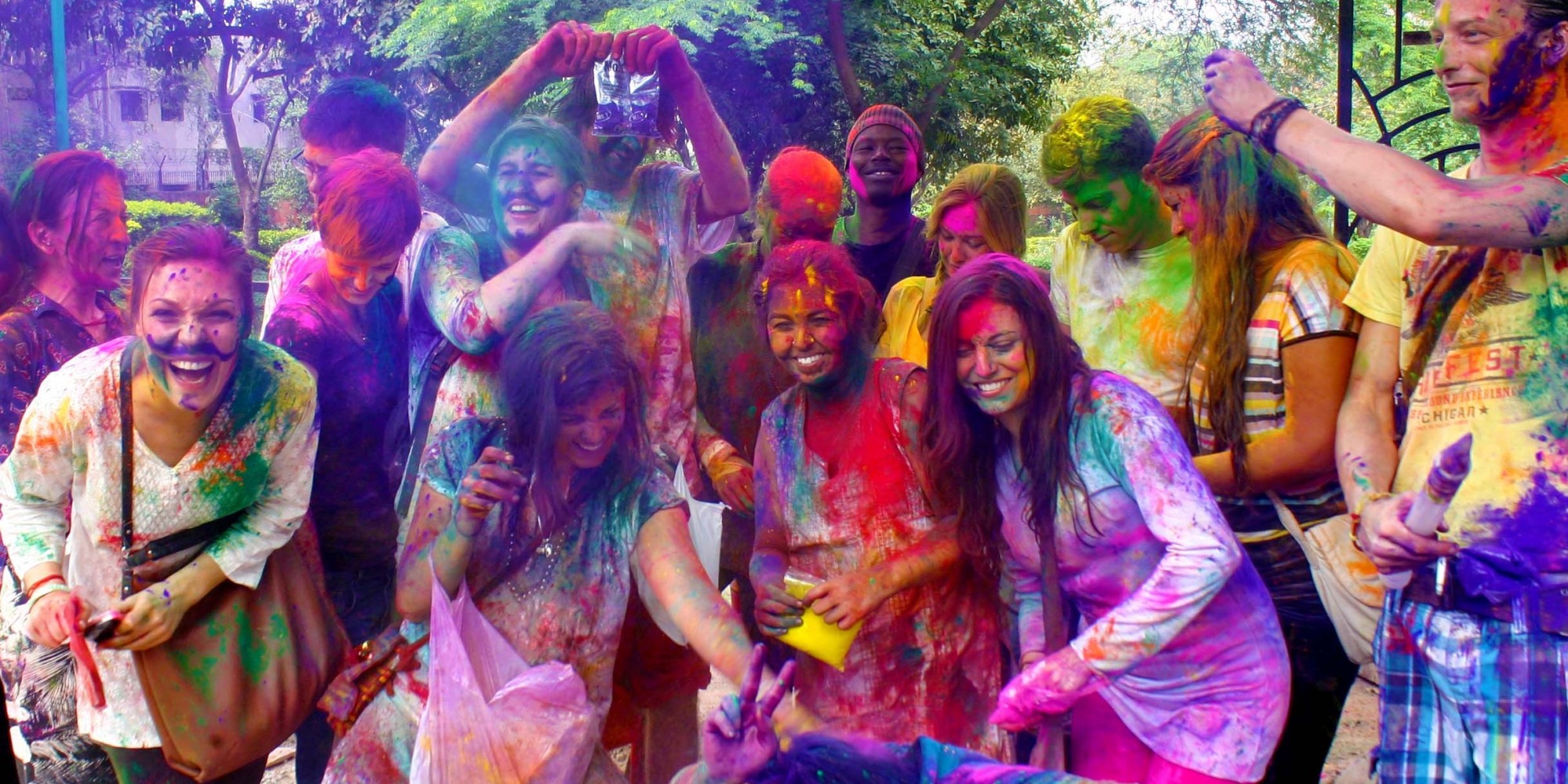Essay on Holi festival. Holi is a spring festival. It is celebrated in the month of Phalguna, as the lunar month is locally known. It is the month of March that corresponds with this time of celebration. Though originated in the northern part of India, Holi has assumed a national flavour over the ages. Despite being a Hindu festival, it is now regarded as a secular event. For, the entire nation takes the day off, as people, irrespective of race, culture and ethnic background, enjoy the spirit of Holi.
Cities and suburbs, towns and villages all come alive to catch the frenzy of March madness with a range of colours. Holi, the great Indian festival of colours, is a unique celebration of high spirits, when the new season is courted with a riot of rich colours. It is like a grand kaleidoscope that glorifies all the hues that tinge and renew the lives on earth.
It falls on the full moon day of the March, the month when the nippy north wind bows out to the refreshing and rejuvenating breeze from the south, heralding the onset of the ensuing summer in this part of the world. It is thus a festival of spring. The time when the seasonal cycle is caught on a transition. This is when nature starts donning new colour. The new foliages start sprouting on the branches, dried and weary over a winter. It is also time when the harvests are reaped and bundled in sheaves. The air is filled with promises of warmth and new lives as the earth discards the wintry glum to greet the bright sun of summer. Beset with this exhilarating backdrop, Holi comes, flinging colours and verve into the landscape of India. As if to mark the renewal and rebirth of life. Holi is thus a celebration of life, the life of love, unblemished joy and good spirits.
ADVERTISEMENTS:
Celebrating the mood of nature with a range of colours. This is what colours of Holi signify. The spirit of celebration is to showcase the shifting panorama of life, of sights, movement of feelings. The human hearts also feel the urge to be recharged with new colours to catch on the mood outside. And Holi gives us a wonderful chance to do this. For, it reminds us that the time is perfect to be coloured, to renew love and the charge your vitality. All in tune with nature. And the colour symbolises the energy, the vivid, passionate pulse of life signifying vitality. The celebration of Holi is very ancient in its origin. And by its very origin, it celebrates an ultimate triumph of the ‘good’ over the ‘evil’. While, a feast of colours associated with the Holi, is the face of this celebration, the original reason of celebrating Holi, lies in its soul.
Literally Holi’ signifies ‘burning’ in Indian language. The reference is found only in ancient Indian mythology. And it is the legend of Hiranyakashipu, to whom the celebration of Holi is associated. Way back in the pre-Christian era, there lived a demon King named Hiranyakashipu in ancient India. He wanted to avenge the death of his younger brother. The brother, also a demon, had been killed by Lord Vishnu, one of the supreme trio, monitoring the life and death in the universe, (according to the Hindu belief). To take on Vishnu, the tyrant King wanted to become the King of the heaven, earth and the underworld. He performed severe penance and prayer for many years to gain enough power. Finally, he was granted a boon.
Powered by the boon, Hiranyakshipu thought he had become invincible. Arrogant, he ordered all in his kingdom to worship him, instead of God. The demon King, however, had a very young son, named Prahalad. He was an ardent devotee of Vishnu. So, the demon King wanted to kill his son. He asked the favour of his sister Holika who, because of a boon, was immune to fire. They planned that Prahalad would be burned to death. A pyre was lit up and Holika on it, clutching Prahalad. Yet, at the end Prahalad emerged unscathed by die fire and Holika, the demon, was burned to ashes. Thus was the triumph of Prahalad, the representative of good spirits. And the defeat of Holika, the representative of evil. Later, even the demon King Hiranyakashipu was killed by Lord Vishnu. But that is quite a different story.
ADVERTISEMENTS:
It is from Holika that the Holi originated. This legend is relived even today on the Holi-evc when the pyre is re-lit in the form of bonfires. Even today, people celebrate this occasion. Huge bonfires are lit up every year on the eve of the full moon night of the Holi to burn the spirit of the evils. Hence the story is associated with the soul of the celebration. Besides Hinduism, India is also the home of innumerable other faiths and the religious and cultural diversity of this nation is manifested in the large number of non-Hindu festivals
